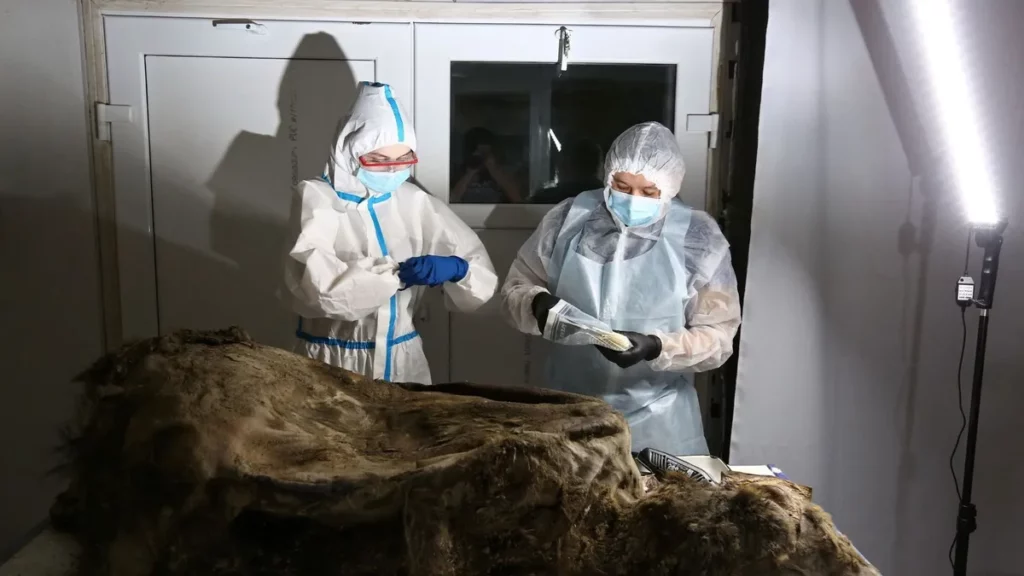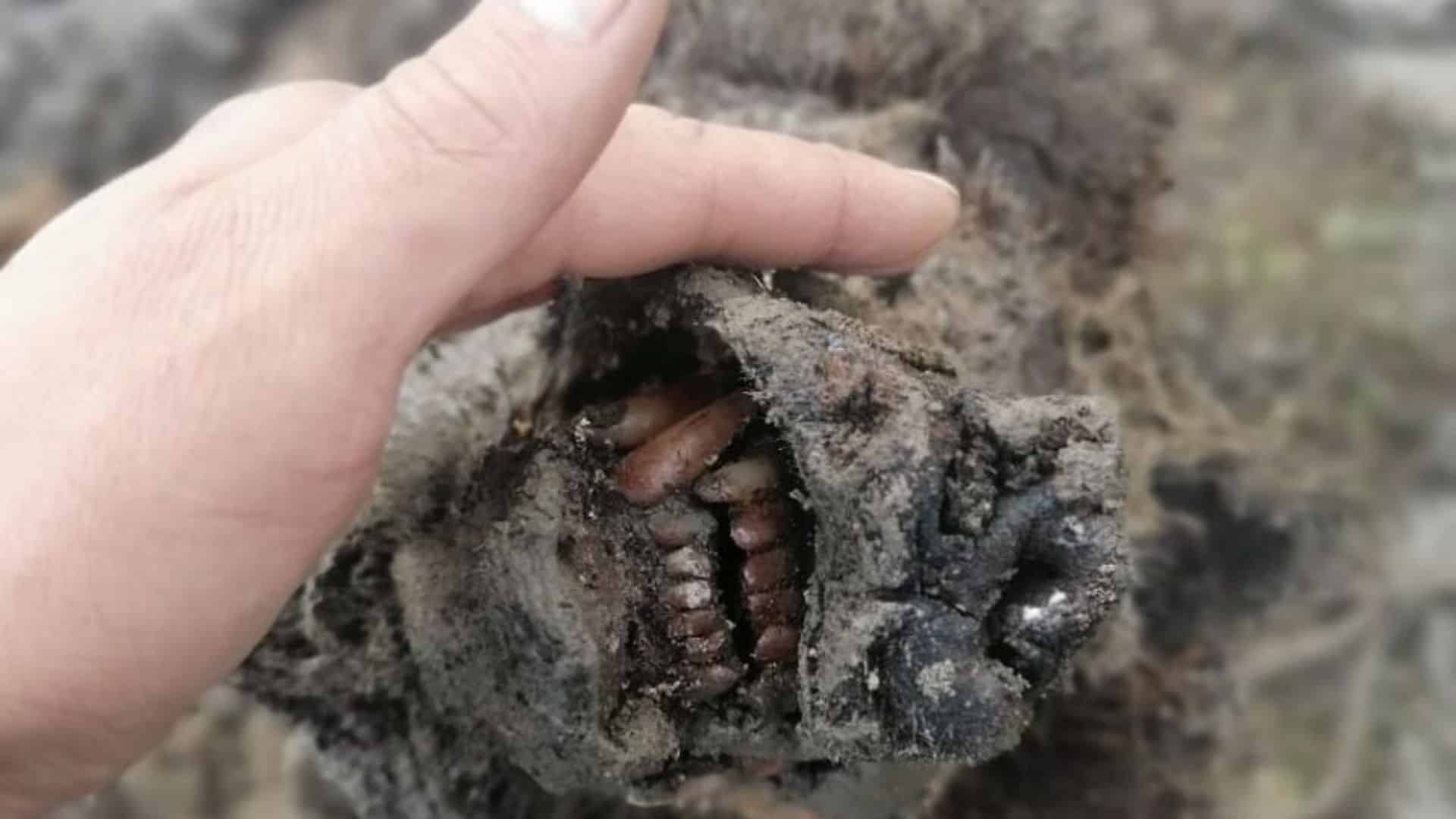
It was 2020, during the height of the pandemic. Most of the world was in quarantine, but for the people living on Bolshoy Lyakhovsky Island in remote Siberia, life went on as it always had, unphased by the commotion of big city life or the prospect of getting infected with a new and dangerous virus. Not too many strangers venture through these isolated frigid wastelands and the few locals tend to keep to themselves. It was around that time that some reindeer herders were in the field doing their usual work and stumbled across a fearsome sight: a large brown bear in the frozen wilderness.
The reindeer herders did not panic – the animal was dead. But it must have perished quite recently seeing as it didn’t appear to be in an advanced state of decomposition. But no one imagined just how unique this animal was until Russian scientists dissected the bear, finding it was more than 3,500 years old.
“This find is absolutely unique: the complete carcass of an ancient brown bear,” said Maxim Cheprasov, laboratory chief at the Lazarev Mammoth Museum Laboratory at the North-Eastern Federal University in Yakutsk, eastern Siberia.
A biological time capsule
The thawing carcass entrenched in the Siberian permafrost was found right next to the Bolshoy Etherican River, hence the specimen was named the Etherican brown bear.
The 77-kilogram (172-pound) bear was so well-preserved that the carcass still contained its internal organs, including the brain. Cheprasov and colleagues dissected the ancient beast, carefully cutting through its tough hide, and began subjecting the tissues to a battery of cellular, microbial, virological, and genetic tests.

In the process, they learned quite a few things about the Etherican brown bear’s last days more than 3,500 years ago, but also about brown bears in general. For instance, they learned that the bear was no older than 3 years when it died of a spinal cord injury. Feathers and plant residue found in its stomach and intestines point to a final supper consisting of a bird that it probably scavenged. Meanwhile, the genetic analysis showed that the mitochondrial DNA — the non-nuclear genetic material inherited solely from the mother’s side — is virtually identical to that of modern brown bears from Yakutia and Chukotka.
Today, there are no bears on Bolshoy Lyakhovsky Island, which is located nearly 50 kilometers (31 miles) from the mainland, which begs the question: how did it get there? The Russian scientists reckon the bear could have just swam there, though that seems rather unlikely. What seems more plausible is that the bear crossed an ice or land bridge that was still usable thousands of years ago.
Before the Etherican bear, researchers could only find skeletons and skulls of bears. But this time, the frigid Siberian permafrost provided science with an invaluable biological time capsule.
The permafrost — made of a combination of frozen soil, rocks, and sand — encasing these buried treasures acts as a protective shield around them, ensuring they stay fairly intact over many centuries. It preserves nearly anything within it, including DNA. Previously, paleontologists have come across a number of remarkable animal mummies preserved by the Siberian permafrost, including many now-extinct species, such as mammoths, cave lions, and wild horses.
Because of climate change, these findings are becoming increasingly common. Warming temperatures are opening up the permafrost and providing scientists with a unique window into life that existed many thousands of years ago.
But there are also many perils. When permafrost thaws, microbes begin to break down the plant material in the formerly-frozen soil, releasing greenhouse gases such as carbon dioxide and methane into the atmosphere, thereby driving further warming and creating a negative feedback loop. What’s more, long-dormant bacteria and viruses trapped in ice and permafrost can spring back to life and pose a risk to human and animal health.






